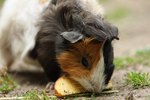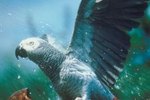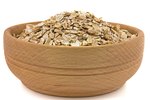
In their native Australia, sugar gliders feed primarily on a wide range of insects and arthropods, the sweet, sticky sap of eucalyptus trees, acacia gum and other pollen. Unfortunately a complete commercial sugar glider diet isn't available, but several diets use fairly easy-to-find ingredients. Veggies should make up a large portion of your glider's diet.
Calcium and Phosphorous
Both calcium and phosphorous are needed minerals in the sugar glider's diet, although phosphorous can greatly inhibit the absorption of calcium. Several veggies are high in either calcium or phosphorous, and a delicate balance between the two is pivotal to his health. Feeding your glider too much phosphorous can cause damage to his delicate body, as the calcium he's eating will be wasted. Because of this, try to stick with twice as much calcium as phosphorous.
High-Calcium Veggies
Vegetables are important sources of calcium for both sugar gliders and humans. A fairly common theme among high-calcium veggies is color: just about any veggie that is dark green is going to contain much-needed calcium and be accepted by your furry flyer. This includes spinach, kale, collard greens and mustard greens. Other high-calcium veggies are broccoli, okra, cabbage and green beans.
Other Veggies
A little variety will not only keep things new and fresh, it will help satisfy your glider's taste. While high-calcium veggies are a good place to start when planning his meal, throwing in a few surprises here and there, or simply rotate veggies on a schedule. Your glider might thoroughly enjoy sweet potato and carrots, but watch out as gliders are known to eat sweets first and fill up on them. This can cause them to lose out on the protein in other meal ingredients. Fresh or frozen peas, green beans or almost any veggie you can think of may make the cut as far as your glider's taste buds go.
Meal Guidelines
Ideally your sugar glider's diet should consist of about one-third protein and two-thirds fruits and veggies. Protein can come from lean meats, but in the wild these guys love to snack on different types of insects and arthropods. Some veggies have good amounts of protein as well. When offering veggies, try to stick with fresh or frozen, and always wash them well to remove any chemicals or pesticides.
References
Photo Credits
-
Jupiterimages/Creatas/Getty Images
Writer Bio
With a professional background in gardening, landscapes, pests and natural ecosystems, Jasey Kelly has been sharing her knowledge through writing since 2009 and has served as an expert writer in these fields. Kelly's background also includes childcare, and animal rescue and care.



